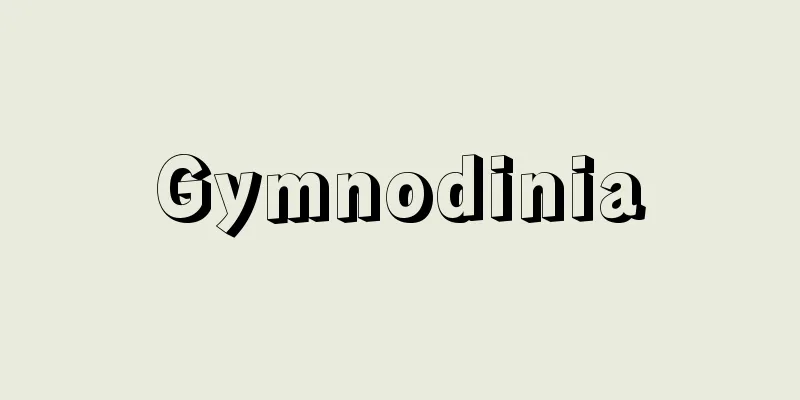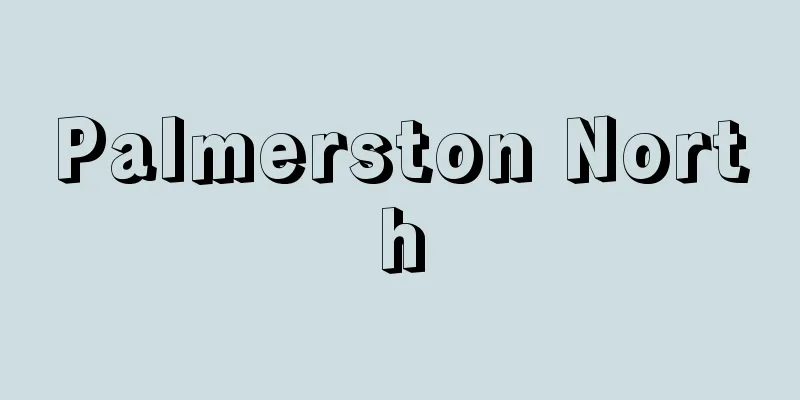Hypothalamus -

|
This area belongs to the diencephalon and occupies the lower part of both lateral walls of the third ventricle. The floor of the third ventricle is where the left and right hypothalamus are connected, and is called the "infundibulum" because it is funnel-shaped. The pituitary gland is attached to the tip of the funnel. There is a groove called the subthalamic sulcus that runs from front to back on the lateral wall of the third ventricle, and the area below this groove is called the hypothalamus, but the contents of the hypothalamus extend above it. The front border of the hypothalamus is the optic chiasm just before the infundibulum, and the rear border is a pair of round, raised mammillary bodies behind the infundibulum. The outer border is formed by the optic nerve bundle, or optic tract, that runs rearward after the optic nerve crosses. The part that continues in front and above the optic chiasm is the anterior wall of the third ventricle, and is called the lamina terminalis. The upper part of the plate end just before the anterior commissure. There is a slightly bulging area, the gray-white protuberance, between the infundibulum and the posterior mammillary body. The posterior lobe of the posterior pituitary gland is a part that continues from the hypothalamus and is made of neural tissue. The anterior pituitary gland is formed early in development by a part of the oral cavity wall that develops as endocrine tissue to become the anterior lobe, which then combines with the posterior lobe to form glandular tissue. [Kazuyo Shimai] Function of the hypothalamusThe hypothalamus is considered the highest center of the autonomic nervous system, and is an extremely important part of the brain and spinal cord that is involved in maintaining life, as it controls the body's autonomic functions, visceral functions, and endocrine functions. It is also deeply related to our emotional and affective behavior. Several cell groups (called nerve nuclei) are scattered throughout a small area of the hypothalamus. How each of these cell groups corresponds to complex autonomic functions is an important issue. In the past, it was thought that each individual cell group had an autonomous function. For example, the functional center for thermoregulation, water metabolism, and sugar and fat metabolism was located in a specific nerve nucleus. However, based on numerous experimental proofs and clinical observations since then, it is considered reasonable to consider the hypothalamus and the areas directly adjacent to it as the overall control center of autonomic functions. In addition, a fairly clear local organization is being partially proven for the two main divisions of the autonomic nervous system's sympathetic and parasympathetic activities. It is said that there is a parasympathetic activity regulating area in the anterior part of the hypothalamus, and a sympathetic activity regulating area in the posterior part. Some scholars explain that the activity regulating area is arranged in three zones, parasympathetic, sympathetic, and parasympathetic, from the lateral wall of the third ventricle toward the lateral side. In addition, specific functions have been proven in certain nerve nuclei. The paraventricular nuclei, located just below and above both lateral walls of the third ventricle, produce the hormones oxytocin and vasopressin. Oxytocin contracts the smooth muscle of the uterine wall and the myoepithelial cells surrounding the secretory ducts of the mammary gland. Vasopressin acts as an antidiuretic hormone and helps maintain water balance. The supraoptic nuclei are a group of nerve cells located just above the optic tracts on both sides, and are thought to produce only vasopressin. The neurites (axons) arising from the nerve cells of these two nuclei reach the posterior pituitary gland and form a nerve pathway called the hypothalamic pituitary tract. Oxytocin and vasopressin produced in the nerve cells of these two nuclei bind to a transport protein called neurophysin and flow as colloidal droplets through the axons of this nerve pathway to the posterior lobe, where they are released into the blood of the posterior pituitary gland when they reach the terminal axons. This phenomenon is called neurosecretory activity, and because the colloidal droplets can be stained, the effects of increases or decreases in these hormones can be examined under a microscope. The nerve fibers that go from the hypothalamus to the anterior pituitary gland have not yet been identified. However, research has shown that the hypothalamus is a site that produces free factors that promote the secretion of gonadotropic hormones, adrenal cortical hormones, thyroid-stimulating hormones, and growth hormones produced in the anterior pituitary gland, and it is known that these free factors produced in the hypothalamus act humorally on the anterior pituitary gland via the vascular system within the pituitary gland. In addition, it has been revealed that tumors and pathological disorders in the hypothalamus can alter sexual development, that damage to certain areas near the base of the brain can lead to obesity, and that damage to certain areas of the ridge can lead to hyperphagia. The mammillary bodies also contain large and small nerve cells, and are thought to have an autonomic nervous function related to the sense of smell. Although the area of the hypothalamus is extremely small, its function is gradually becoming clearer by understanding the function of specific groups of nerve cells. However, there are still many unknowns. The nerve fibers running through the hypothalamus are tangled, and many of them are spread out, making it difficult to trace anything other than a few nerve fiber bundles, making it difficult to understand the structure and function of the hypothalamus. [Kazuyo Shimai] ©Shogakukan "> Location and structure of the hypothalamus Source: Shogakukan Encyclopedia Nipponica About Encyclopedia Nipponica Information | Legend |
|
間脳に属し、第三脳室の両外側壁の下部を占める領域をいう。第三脳室の底床は左右の視床下部がつながった部分にあたり、漏斗(ろうと)状をしているため「漏斗」とよぶ。この漏斗の先端には下垂体(脳下垂体)が付着している。第三脳室の外側壁に前後に走る視床下溝(かこう)とよぶ溝(みぞ)があり、この溝から下方を視床下部とよんでいるが、視床下部の内容はそれより上方まで広がっている。視床下部の境は、前方は漏斗の直前にある視(神経)交叉(こうさ)がこれにあたり、後方は漏斗の後方にある1対の丸く隆起した乳頭体がこれにあたる。外側の境は、視神経が交叉後、後方に走る視神経束、すなわち視索(しさく)によってつくられる。視(神経)交叉の前上方に続く部分は第三脳室の前壁で、終板とよばれる。終板の上方は前交連の直前で終わる。漏斗部分から後方の乳頭体までの間にはやや膨らんだ部分、灰白(かいはく)隆起がある。下垂体後半部の後葉という部分は、視床下部から連続している部分で神経性組織である。下垂体前半部は発生の初期に口腔(こうくう)壁の一部が内分泌組織として発達して前葉となり、後葉と結合したものであり、腺(せん)組織である。 [嶋井和世] 視床下部の働き視床下部は自律神経系の最高中枢とされ、体の自律機能、内臓機能あるいは内分泌機能などの統御中枢として、脳脊髄(のうせきずい)のなかでは生命維持にかかわるきわめて重要な部分である。さらには、われわれの感情行動や情動行動にも深い関係をもっている。視床下部では狭い範囲の全領域にいくつかの細胞集団(神経核という)が散らばっている。これらの細胞集団がそれぞれ、複雑な自律機能にどのように対応しているのかは重要な問題である。かつては個々の細胞集団が、それぞれ自律作用をもっていると考えられてきた。たとえば体温調節、水分代謝、あるいは糖や脂肪の代謝などは特定の神経核にその機能中枢があるとする考え方である。しかし、その後の数多くの実験的証明や臨床的観察から、視床下部、およびそれと直接接している領域は自律機能の総合的な支配中枢とみなすのが合理的と考えられている。なお、自律神経系の交感性と副交感性の二つの活動の主要区分についても、部分的にかなり明確な局所的構成が証明されつつある。視床下部の前部には副交感性の活動調節部分があり、後部には交感性の活動調節部分が存在するといわれるほか、学者によっては第三脳室外側壁から外側方に向かって副交感性、交感性、副交感性という3帯に分かれた活動調節部が配列していると説明している。また、ある特定の神経核では特異的な働きが証明されているものもある。 第三脳室の両外側壁の上方で壁直下に存在する室傍核(しつぼうかく)はオキシトシンおよびバソプレッシンというホルモンを産生し、オキシトシンは子宮壁の平滑筋と、乳腺の分泌管を囲む筋上皮細胞を収縮させる働きがある。バソプレッシンは抗利尿ホルモンとして水分平衡の保持に役だっている。視索上核は両側の視索のすぐ上方に存在する神経細胞集団で、バソプレッシンのみを産生すると考えられている。これら両核の神経細胞からおこる神経突起(軸索)は下垂体後葉まで達して視床下部下垂体路という神経路を構成している。両核の神経細胞内で産生されたオキシトシンやバソプレッシンは、ノイロフィシンという運搬用タンパクと結合し、コロイド小滴としてこの神経路の軸索内を流れて後葉まで達し、その軸索末端に至ると、ここから下垂体後葉の血液中に放出される。この現象を神経分泌作用とよんでいるが、このコロイド小滴は染色が可能であるため、これらホルモンの増減による働きのぐあいを、顕微鏡下で調べることができる。 視床下部から下垂体前葉へ行く神経線維はまだ証明されていない。しかし、下垂体前葉で産生される性腺刺激ホルモン、副腎皮質(ふくじんひしつ)ホルモン、甲状腺刺激ホルモン、あるいは成長ホルモンなどを分泌促進させる遊離因子をつくる部位が視床下部にあることが研究され、視床下部で産生されたこうした遊離因子は下垂体内脈管系を経て液性に下垂体前葉に働きかけることが知られている。そのほか、視床下部における腫瘍(しゅよう)や病的障害によって性的発育が変えられること、脳底に近い一定部位の損傷によって肥満症が発症すること、隆起域のある部位の損傷によって過食症をおこすことなどが明らかにされている。また、乳頭体は内部に大小の神経細胞が含まれており、嗅覚(きゅうかく)に関係のある自律神経機能をもつと考えられている。 視床下部の領域はきわめて狭いが、このように特定の神経細胞集団の働きを知ることによってその機能がしだいに明らかにされつつある。しかし、なお不明な点も多い。視床下部内を走る神経線維は錯綜(さくそう)しており、その多くは広がっていて若干の神経線維束以外は追跡しにくいということが、視床下部の構造やその働きの解明を困難にしている。 [嶋井和世] ©Shogakukan"> 視床下部の部位と構造 出典 小学館 日本大百科全書(ニッポニカ)日本大百科全書(ニッポニカ)について 情報 | 凡例 |
>>: Market price - Shijoukakaku
Recommend
Safety belt - Safety
…By the middle of the Meiji period, absorbent cot...
Koyata Iwahashi
...The first time this was seen in the enthroneme...
Clapeyron (English spelling) Benoit Paul Emile Clapeyron
French engineer and physicist. Born in Paris. Stu...
Activated clay - Activated clay
White clay (a white clay whose main components ar...
Concept art - Gainen Geijutsu (English spelling) concept art
In Japan, it is often called conceptual art. It is...
Hanging parrot
A general term for birds in the genus Loriculus in...
Kenzan Ogata
A ceramic artist and painter from the mid-Edo per...
Echo Pulse
…At this point, electromagnetic waves are emitted...
Chaplin's Murderous Era
An American film produced in 1947. Original title:...
Edo Town Hall - Edomachikaisho
During the Kansei Reforms, this was established i...
Lower Lagos Recht
...As commerce developed and transactions in urba...
Innami [town] - Inami
A town in Hidaka County in western Wakayama Prefec...
Garamasadon - Garamasadon
...He gained attention with "The Mischievous...
Feodosii
…In the second half of the 15th century, he devel...
The True Meaning of the Lord of Heaven (English: Tian-zhu shi-yi)
A book written by Italian Jesuit missionary Matteo...


![Togo [town] - Togo](/upload/images/67cc4f195f96c.webp)



![Duff (English spelling) [Arabic]](/upload/images/67cc515989075.webp)


